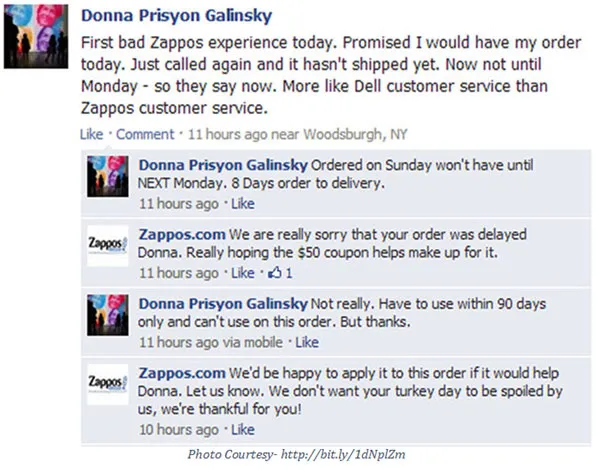7 deadly sins of startup social media marketing
“Yeah, I made mistakes but…life doesn’t come with instructions.”
Sure, it does not. But that’s not the case with social media - there’s certainly some good advice out there to help you avoid blunders on social media. After all, mistakes are meant for learning and not repeating, right?

So what are some of the common mistakes that companies, especially startups, make while defining and executing their social media strategy? Here is what I’ve found:
1. Incorrect platforms
Agreed– Facebook has 1.44 billion monthly active users (as of Mar 31, 2015). But you can’t have the whole universe as your target audience. In today’s time and age, when everyone is spoilt for choice, the most important marketing decision you need to make is defining the target audience. Targeted marketing is the key of the game, and targeted marketing is, by definition, exclusionary. You need to clearly define your target audience.Once that is done, you need to identify the platforms on which your target audience is active. Remember – nobody searches for a job on Facebook or looks for a hotel review on LinkedIn. Being present on the most popular platform does not make sense if your target audience is not active there. Here’s some quick help when it comes to popular platforms:
Facebook – It’s a good platform when:
- You have highly visual content
- You want to leverage the community effect
- You want to build trust in the minds of the users by leveraging their friends’ network’s
- You are ready to spend on ads asrecent changes in Facebook’s algorithm have made it very difficult to organically reach out to fans
Twitter – It is a good platform to:
- Broadcast your message
- Join the on-going conversations
- Connect with thought leaders and people that matter to you
- Build a position for yourself
LinkedIn – Consider using it when:
- You are a B2B company
- You want to connect with a professional audience and establish your thought leadership within a group of homogeneously targeted audience
Google+ - Good platform to:
- Help you with your SEO efforts
- Participate in Google communities to connect with like-minded people
Pinterest – You can use it when:
- Your primary target audience include women
- You have highly visual content to share
These of course are just guidelines. You need to do a more thorough research and brainstorming to finalise the social platforms for your brand.
Related read: 13 ways you can make digital marketing work for you
2. Doing Too Much or Too Little
Once you choose a social platform, you need to commit to it. Having an inactive presence on any of the platforms creates a bad impression. Having the last tweet date as two years back is worse than not having a Twitter handle. You need to show activity on the social platforms, and need to have consistency. The opposite is also true – you just can’t do too much. Don’t bombard your LinkedIn company page followers with 10 updates a day just because that will give you more number of impressions!
3. Ignoring Content Marketing
Content marketing is the gasoline of your social media efforts. You need to have good blog articles to showcase your expertise. You need interesting infographics to share with your audience. eBooks are good to share as a free giveaway. Whitepapers arean excellent way to establish your thought leadership. You need content. Period. Just don’t ignore it from your social media strategy. Not having enough bandwidth to create content cannot be an excuse today.
4. Inappropriate Content or Self Promotion
Each platform has different content needs. Don’t make the mistake of pushing the same content on all the platforms just because there are tools available that allow you to do so. Each platform requires different tone of messaging and different type of content. More importantly, you also need to mind the timing of your updates. Your audience is not going to be present on all the platforms at the same time. Social media does require some serious time and attention commitment Don’t get away with easy options of automatingyour schedule without giving it a serious thought, or having a proper plan in place. Another thing to keep an eye on is the type of content you share. Too much of self-promotion is a big turn-off. Just because you are excited about your product or services does not mean you can talk about it all day long. Have a good balance of education, industry insights, engagement and self-promotion in your content sharing.
You'll also like to read: How to make influencer marketing work for your startup
5. No Personal Branding
People relate to other people – and this is especially true for startups, where people are buyingservices fromfounders more than from the company. So it is important that startups include the personal branding of their founders in their social media planning and strategy. You need a face for your company.

6. Canned Responses to Negative Comments
Lot of companies shy away from social media because of the fear of negative comments. But note that negative comments are, infact, good opportunities for you to build trust in the minds of your readers. (Read more about it here.) One of the foremost thing you need to remember while handling negative comments on the social platform is that you should NEVER give a canned response to any negative comment. Be personal and show genuine interest in solving the problem. Acknowledge the issue, and take genuine actions to resolve it. If the there is a mistake, accept it and take all efforts to resolve it. Check this example here from Zappos – simply brilliant. Isn’t it?

7. Not aligning with the target audience in terms of tone and messaging
Try and align as much as you can with your target audience – if you are targeting the youth, introduce some quirkiness in your overall messaging. If you are targeting CXOs, maintain a professional tone. Just make sure that your marketing tone matches your company culture. After all, today, marketing is no more the job of marketing department only. It is the job of each and every person representing the company. Here’s a brilliant example of this –

Do share your experience on what worked and what did not work for you. It’s all about sharing knowledge, isn’t it?
Also read: How to think about branding and digital marketing for a B2B company







